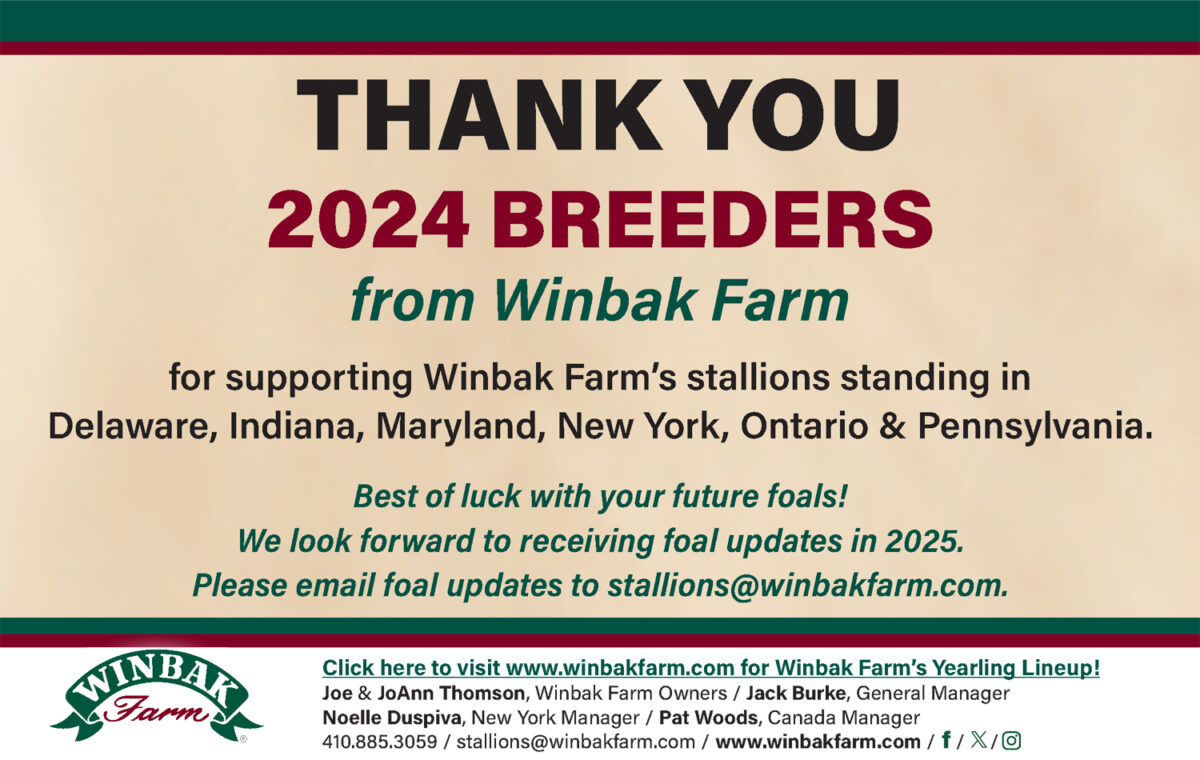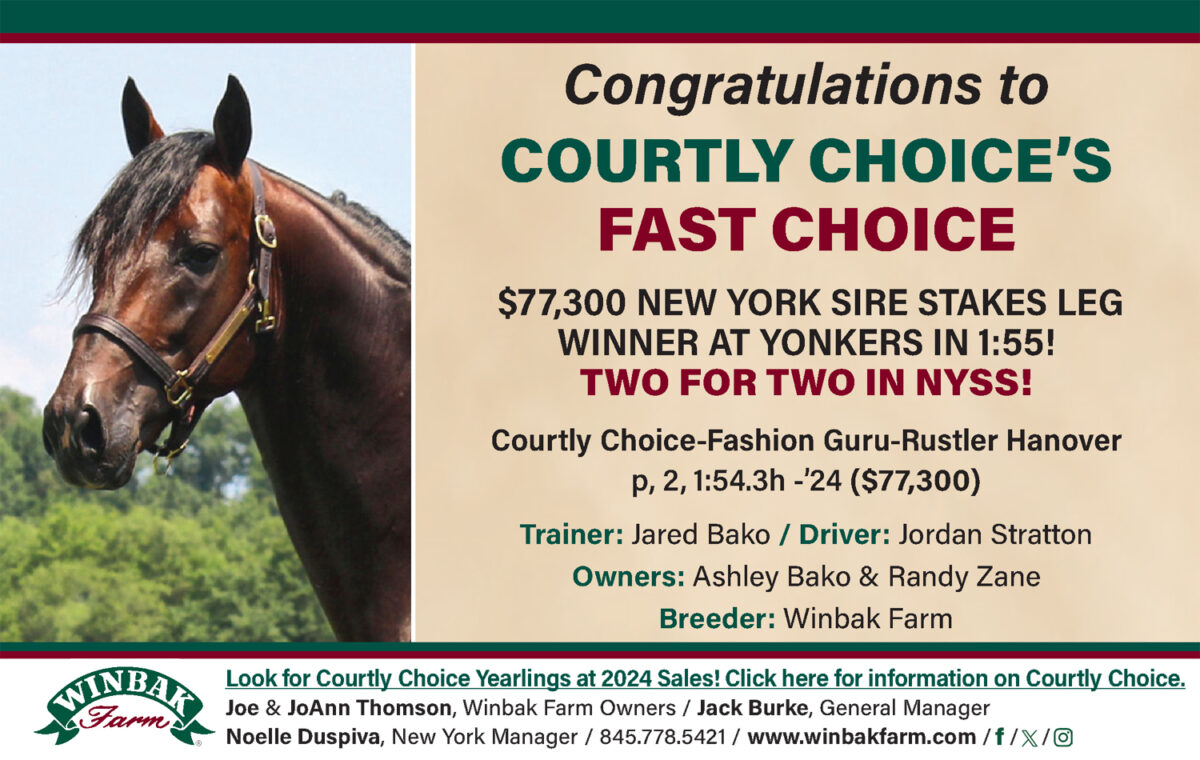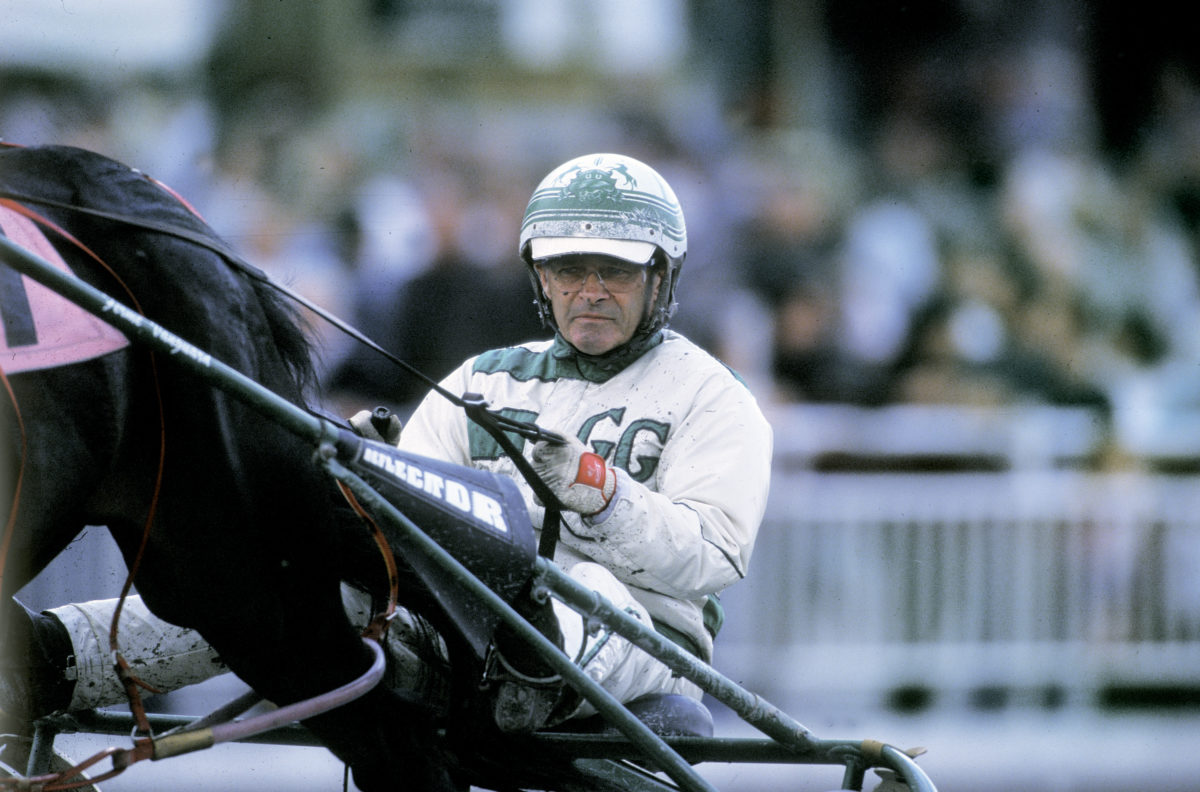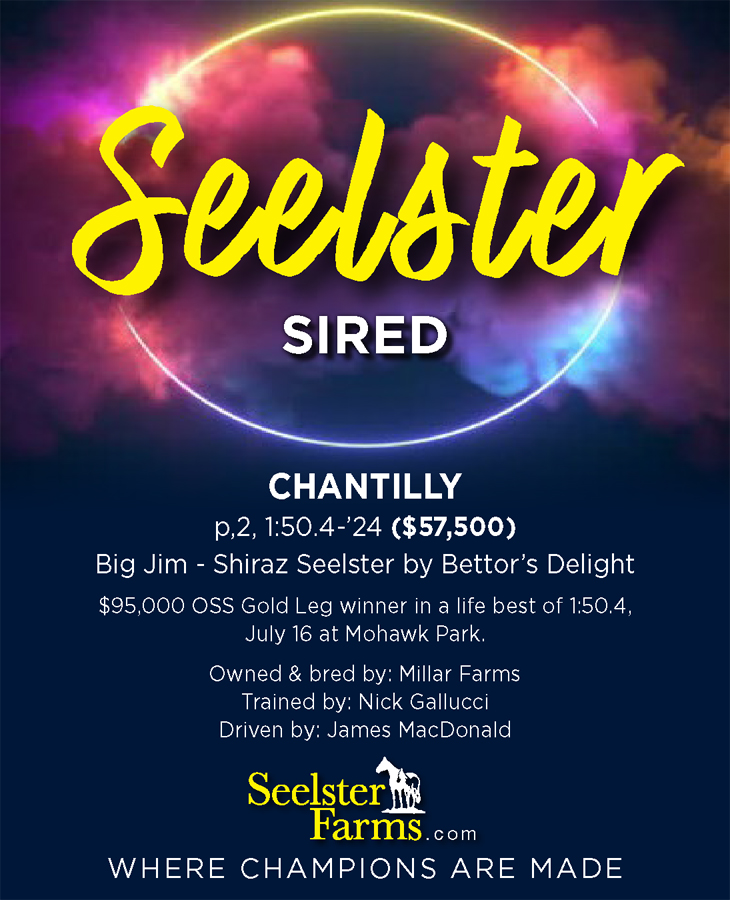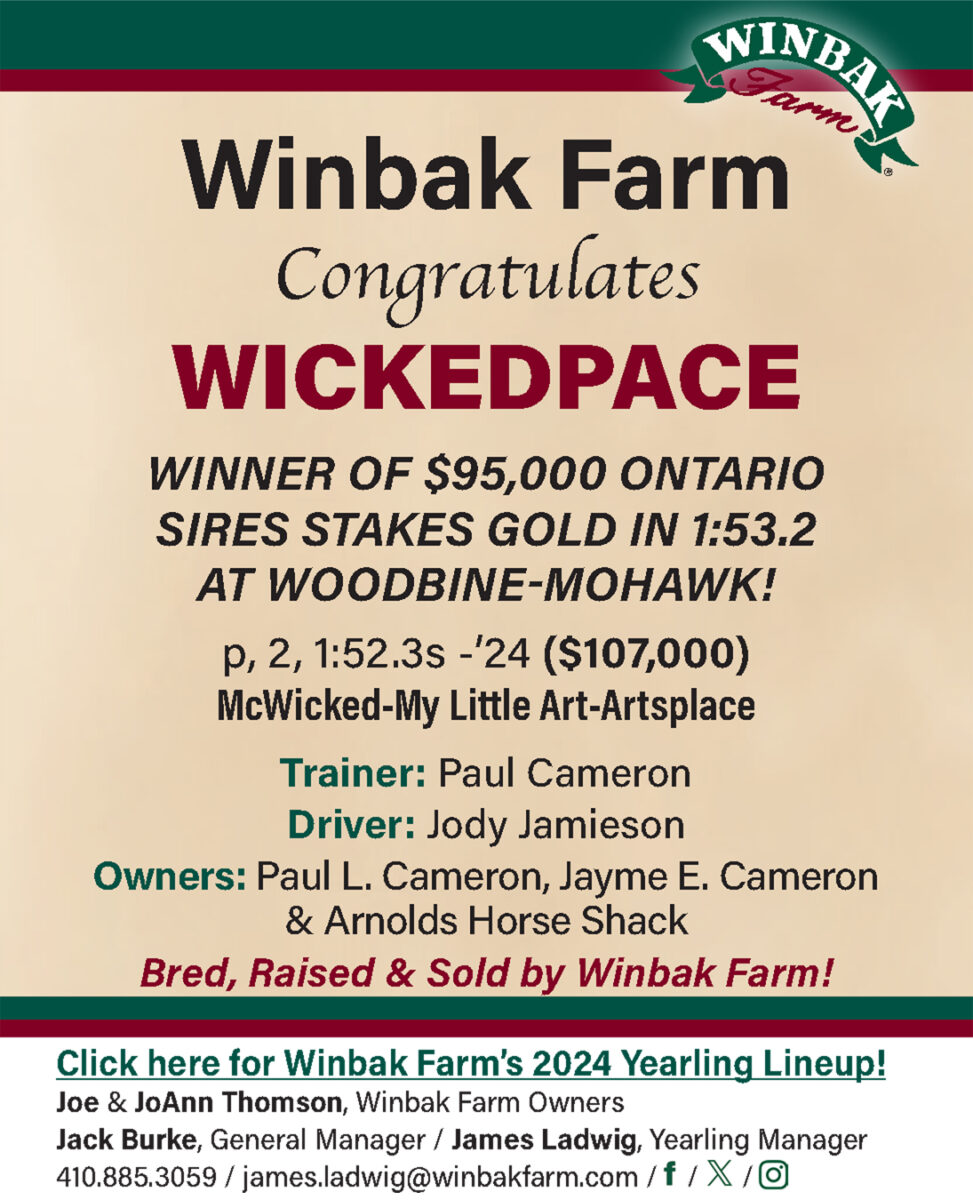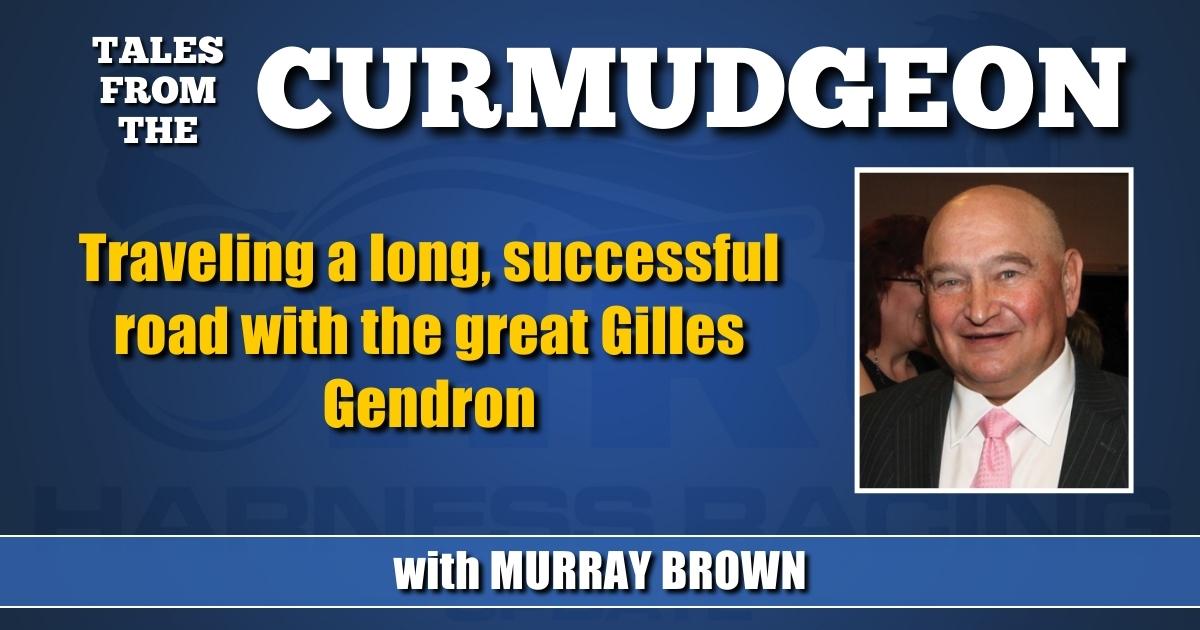

Traveling a long, successful road with the great Gilles Gendron
Traveling a long, successful road with the great Gilles Gendron
by Murray Brown
It was the fall of 1964, and this scribe had been working for les Fermes Miron, then the largest and undoubtedly the best standardbred racing stable in Canada.
The enterprise was owned by the five Miron Brothers who came from abject poverty to build what was then the largest cement company in Canada and one of the largest in all of North America. The brothers, Adrien, Gerard, Raymond, Vincent and Gilbert had all been active in the building of the cement business and the quarry that produced the cement that has been described as the product from which modern Montreal was built.
The business was sold to a giant Belgian firm for many millions of dollars.
The oldest of the Mirons and the company’s face Adrien, had always loved horses and horse racing and decided to use some of his new found wealth to build one of North America’s great racing stables. In effect, he took his younger four siblings along for the ride. The ownership of the racehorses were raced under the name Adrien & Gerard Miron, but all five brothers had a financial stake in the enterprise. The stable quickly became one of the best in the North America. It undoubtedly reached the peak of its success when Tie Silk won the 1962 Roosevelt International Trot for trainer/driver Keith Waples. This was undoubtedly the biggest and most important race that they won, but there were many others as well.
Alas, Waples was to be the stable’s trainer/driver for only that one year. Keith had decided that roaming throughout North America racing horses from track to track was not for him. The stable then hired a young French Canadian from Lac Megantic by the name of Marcel Dostie to assume those duties.
As I am sometimes prone to do, I am wandering. This story is not about the Mirons and the somewhat short-lived dynasty that they established. To a lesser degree, it is about Dostie and this wonderful man’s effect that he had on the life of one of the greatest yet somewhat unrecognized driving talents I have seen, the now 77 year old retiree Gilles Gendron. As somewhat of a footnote, Marcel Dostie also played a big part in any success I’ve achieved in this sport.
Back to the beginning.
Adrien Miron had once been to the Little Brown Jug. He loved owning good horses. He would often overpay. However, he realized that was what someone sometimes had to do to get quality. He also loved appearing on the world’s harness racing stage.
The date was Sept. 19, 1964. Monsieur Adrien (as I and others referred to him), had decided that he wanted to have a horse to race in the next Thursday’s Little Brown Jug. I might add that although the Mirons and their racing manager, their nephew Jean Pierre Dion and Marcel Dostie, could get by in English, their primary language was French. They sometimes relied on me to do some of the talking when it came to dealing with English speaking people.
Jean Pierre Dion told me that his uncle needed a Little Brown Jug horse. “He wants you to call the connections of all the entries and see what might be for sale.”
Whatever Monsieur Adrien wanted, Monsieur Adrien usually got. I began phoning the owners of the Jug entrants. I believe it was on the third call that I spoke with Jack Baugh, the owner of a Shadow Wave chestnut colt named Red Carpet. He was what I would describe as a “lower middler” of the entrants. If things went absolutely his way, he might have a chance of getting a piece of the action. Mr. Baugh said that his colt would be for sale if he could realize enough for him. Jean Pierre called his uncle, conveying the price and also my dim view of his chances of his winning the race.
“I don’t care” said Adrien. “Call him back and tell him he has a deal.”
I think, but I’m not certain that Clarence Martin was training the colt at the time. Adrien wanted the horse in his stable under the stewardship of Dostie, ASAP. Dostie wanted to have his best groom, a young lad of 20 named Gilles Gendron to be the colt’s caretaker. There were a few problems, though. Red Carpet was in Delaware, OH. Gilles Gendron was in St Augustin, QC.
In addition, young Mr. Gendron spoke not a single word of English at the time. How would he get to Ohio and how would he manage while there? Enter Murray Brown.
Marcel called me on Sunday, “I want you to drive to Delaware and take Gilles with you. He doesn’t drive a car and doesn’t speak English, so you will be in charge. As far as taking care of the horse is concerned, he doesn’t need any help. This kid is a natural with a horse. He’s the best natural horseman I’ve ever been around. Mark my words, this kid will become a great driver one of these days. He has the best set of hands I’ve ever seen.”
This was said before Gendron had ever participated in a single race, although he had driven many sets of Marcel’s pupils in training sessions.
Back to the Fall of 1964.
With my limited knowledge of French, I drove Gendron to Delaware Ohio. I seem to recall us stopping for the evening at a motel in Cleveland.
As for that Jug itself, it was won by the W R Haughton trained and driven Vicar Hanover. As predicted, Red Carpet didn’t do well, but his being run into didn’t help his cause any. Dostie actually made an objection, the only time I ever saw one in Delaware.
It’s now 58 years later. Much as Dostie predicted, Gilles Gendron became a great driver. So good that:
- He has won 7,054 races and his horses in those events have earned $36,022,373.
- He won 11 consecutive driving championships at Blue Bonnets when his competition among others included Hall of Famers Benoit Cote, Jim Doherty, Herve and Yves Filion, Jacques Hebert, Gilles and Michel Lachance, Keith and Ron Waples, Bill Wellwood and others such as Henri Filion, Robert Samson and of course his mentor Marcel Dostie.
- In 1972, the fairly new Windsor Raceway conducted a North American Drivers Championship won by Gendron over Carmine Abbatiello, Ron Feagan, Herve Filion, Del Insko, Joe Marsh Jr, Lew Williams and Greg Wright. The winner receiving a brand new Chrysler Imperial automobile.
- In addition to his incredible streak at Blue Bonnets, he has also been the leading driver at Freestate and Pompano Park.
You are just a baby at 77, compared to an old fart like me, a newly minted octogenarian. What do you do to keep yourself busy these days?
“I’m pretty much retired. I live in Ste Eustache just north of Montreal, not too far from where the old Miron Farm was. When it warms up a little, I work a few days at a golf club helping in maintenance. I play a little, but not well at all. I’m still involved in watching racing, all kinds of racing and from just about everywhere. I watched the big thoroughbred race from Saudi Arabia on Saturday. I watch racing from pretty much anywhere I can find it.”
Do you find much difference between the racing in your era and what we find today?
“It’s very different. The key element in my opinion is the advent of the catch driver. Even though catch drivers were prevalent in my time — heck I was primarily one myself — we always had a few horses that we trained ourselves. The style of racing is so much different today. It’s all go, go, go. It’s rare that you get a chance to give a horse a breather in a race. I don’t blame the drivers, because it’s their job to do as well as they can by any means necessary. Chances are that they might not be behind the horse next week that they are behind tonight. I think it’s also much harder to be a driver today. The top ones are always on the go — both day and night. They might be flying or driving to race at places in Pennsylvania, New Jersey and Ohio in the afternoon and then have to drive or fly to New York, The Meadowlands and Canada at night. There’s a lot of work and a lot of stress involved.”
Who were the best horses you’ve ever sat behind?
“They were both trotters. I drove Grades Singing when she was Three Year Old Trotter of 1964. I think my all-time favorite was Garland Lobell who as we both know has had such a profound influence on the breed. He was able to make seemingly ordinary mares into world champion producers.”
Who were the best drivers you raced against?
“If I had to pick just one it would be Herve Filion. He was just incredible. There was only one like him and we will never see his like again. Then of course, there are others, many others — Michel Lachance, John Campbell, Bill O’Donnell, Lew Williams, Henri Filion. I think one who’s name is not mentioned enough is Benoit Cote, not only a great driver, but a great horseman and perhaps most importantly one of the greatest human beings who has ever been involved in our great sport.”
You mentioned Mike Lachance. I know that you are still friendly with him and speak with him occasionally. One thing I need to tell you is that he and I generally get together and chat, usually at Harrisburg, each year. Invariably, the conversation turns to drivers. Here is something that he has said to me more than once. “People have asked me how good a driver Gilles Gendron was. I always correct them. I tell them Gilles Gendron wasn’t a good driver, Gilles Gendron was a GREAT DRIVER!
“That is very kind of him. We’ve been friends for a long time. He not only was a great driver and a great horseman, he is also one of the most intelligent people I’ve known in all my years in the sport.”
In addition to still spending a lot of time watching races everywhere, what else do you do to keep yourself busy?
“I’m still a huge hockey fan, although my Habs haven’t given me a whole lot to be happy about this year. But they are still young and they’ve picked up a lot in the last couple of weeks. I’m a friend of Serge Savard who I speak with occasionally. Of course, Serge is also quite active as an owner in harness racing. I was also a good friend of John Ferguson. I look back and think that he probably enjoyed horse racing as much as he did hockey. When I raced at Freestate, I raced some horses for Mark May, one of the famous “Hogs” of the Washington Redskins. He was a really nice guy and loved racing as well.”
Tell me something about Gilles Gendron that nobody knows?
“I don’t know about nobody, but here is something that very few people know. I and a few friends once owned Cam Fella. There were three of us. We bought three mares in foal, with the goal of raising their foals and selling them as yearlings. One of those mares was Nan Cam, the dam of Cam Fella, who was carrying him when we bought the mares. We kept the mares at Walnut Hall Farm where they had their babies. We sold Cam Fella as a yearling, for as I recall $21,000. He was bought by Doug Arthur. Doug started him fairly late at 2. I think in November, maybe even December. He made a few starts with him and then sold him to the two Norms, Clements and Faulkner, for as I heard $100,000. After she had Cam Fella, she never had another notable foal again.”
If you were younger, how do you think you’d do on the racetrack today?
“I think I’d do alright. I’m pretty sure that I could hold my own. I do think, though, that I’d have to make some adjustments to my driving style to keep up with the speed of today. I look back upon myself as being more of a finesse type driver, rather than one who puts an emphasis on speed. I think that if you are good, you are good. The same also applies if you are not.”
Have a question or comment for The Curmudgeon?
Reach him by email at: hofmurray@aol.com.






